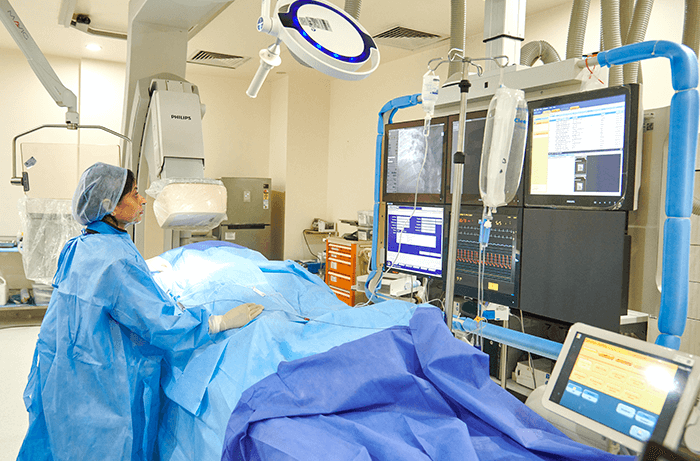×
Select Your Country
 International
International

×
Select Your Country
 International
International


Coronary angioplasty is performed to open clogged arteries. The procedure can provide relief from symptoms, such as shortness of breath and chest pain. Angioplasty is generally conducted during a heart attack to quickly open a blocked artery and mitigate damage to the heart. The procedure involves the insertion and inflation of a small balloon into the site where the artery is clogged to help open it. It can also be performed through the artery in the wrist instead of the one in the thigh or arm. Cardiologists generally prefer the radial approach through the wrist owing to its benefits, such as easy compressibility, low risk of restricted blood flow to the tissues, superficial location, and fewer risks of bleeding.
Rotablation
The rotational atherectomy of coronary arteries procedure is performed for debulking the heavily calcified coronary arteries and preparing the lesion for stent implantation via the thigh.
Why Manipal?
At Manipal Hospitals, our highly experienced team of cardiologists diagnose and then determine the approach (femoral or radial) of coronary angioplasty to be followed while prioritizing patient comfort and safety during the entire process. Their expertise in performing several types of cardiac procedures involving angioplasty helps them offer the best patient outcomes while adopting coronary angioplasty techniques through the arm, wrist, or thigh.
Solutions for Coronary Angioplasty
Cardiologists usually combine angioplasty with the insertion of a small wire mesh tube called a stent into the artery. This assists them in keeping the artery open, thus mitigating the chances of its narrowing again. Medication is applied on most stents to help keep the artery open. Our highly proficient team of interventional cardiologists are equipped with premium quality balloons and stents, which helps them perform this procedure with finesse.
Risks
The chances of the coronary artery getting ruptured or torn are quite high during the procedure. In such cases, an emergency bypass surgery may be required. In patients with kidney problems, the dye used during the procedure and the placement of the stent could aggravate kidney damage. Thus, to prevent these complications, our expertly trained diagnosis team prescribes a series of tests before the procedure to determine any underlying conditions that can impede the success of the procedure.
The success of Coronary Angioplasty
Angioplasty is highly effective in clearing out coronary arteries, with more than 90% of all patients reporting relief from the symptoms caused due to clogged arteries. Moreover, only 30-40% of all patients who have undergone coronary angioplasty will report reoccurrence of the narrowing of arteries at the location of balloon inflation. At Manipal Hospitals, we are proud to share that our success rate in coronary angioplasty procedures stands at 100%. Our skilled and highly proficient team of interventional cardiologists ensures that patients return to their homes with a smile on their faces after the procedure.
Infection Control Protocol
The recovery period following angioplasty and stenting is generally quite short and the patient is discharged 12-24 hours after the removal of the catheter. Many patients can resume their routine activities after a few days or a week post the completion of the procedure. However, patients who experience discomfort are kept under supervision and care to prevent complications or infections. At Manipal Hospitals, we follow a stringent infection control protocol and ensure a clean and sterile environment is maintained before, during, and after the patient’s stay in the hospital.